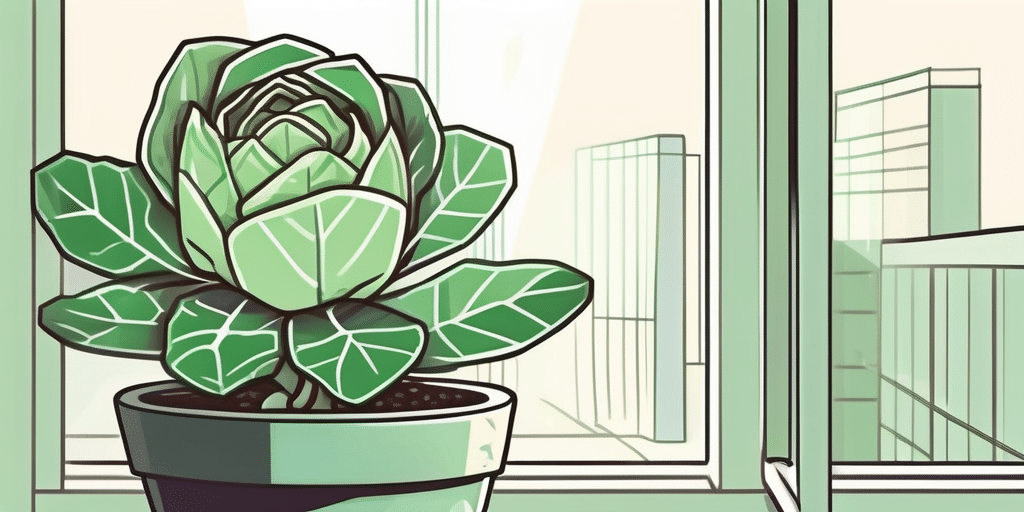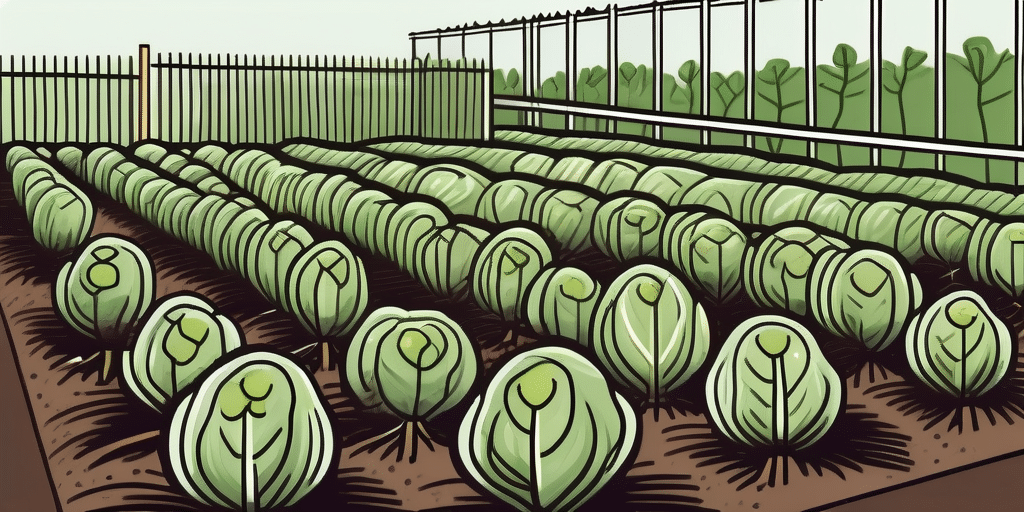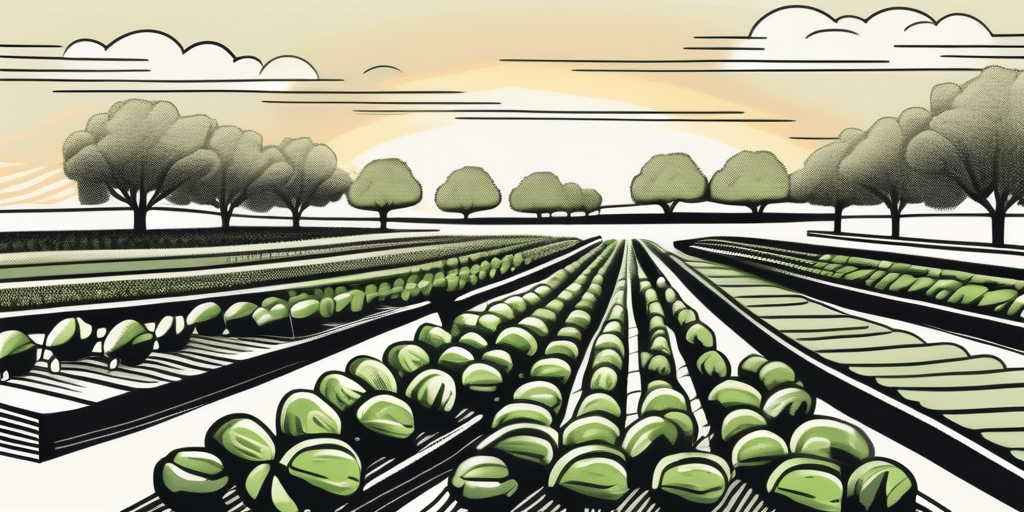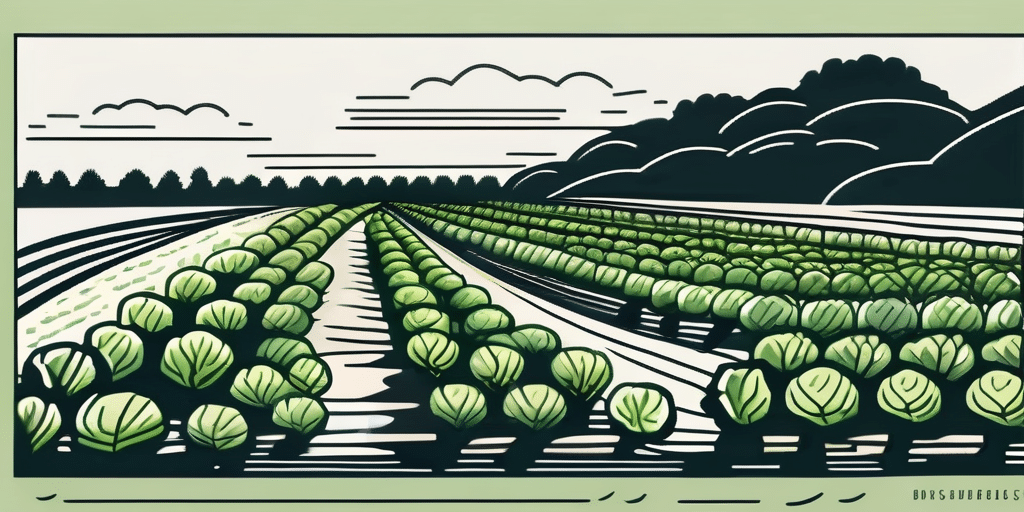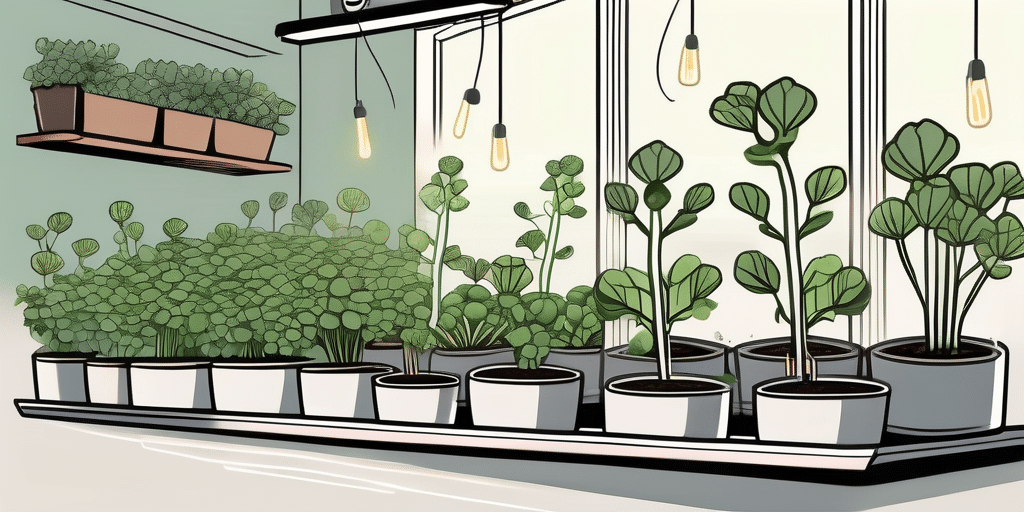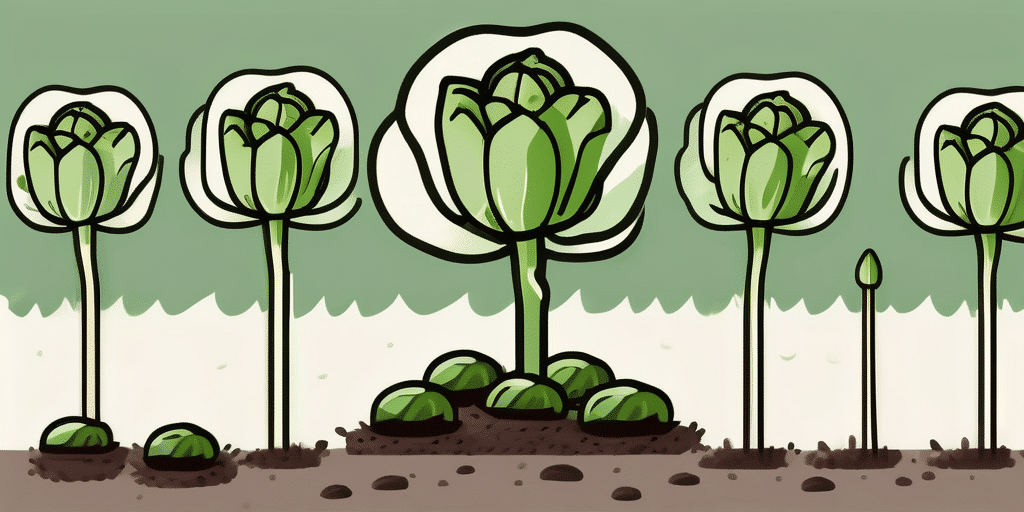If you’re a vegetable gardening enthusiast in Alabama, you might be interested in growing Brussels sprouts. These delicious and nutritious miniature cabbage-like veggies are a great addition to any garden. In this article, we will guide you through the process of growing Brussels sprouts in Alabama – from when to plant them to when to harvest or pick them. So, let’s get started!
Best Brussels Sprouts Varieties for Alabama
Before we dive into the details of growing Brussels sprouts in Alabama, let’s talk about the best varieties for this region. Here are a few varieties known to perform well in Alabama:
- Long Island Improved
- Jade Cross
- Catskill
These varieties are known for their reliable performance and ability to withstand the unique climate of Alabama.
Long Island Improved is a classic Brussels sprout variety that has been a favorite among gardeners for decades. It produces medium-sized sprouts that are perfect for roasting or sautéing. The plants are vigorous and can tolerate a range of growing conditions, making them well-suited for Alabama’s variable climate.
Jade Cross is another excellent choice for Alabama gardeners. This variety is known for its uniform, medium-sized sprouts that have a deliciously sweet flavor. Jade Cross plants are also resistant to many common Brussels sprout pests, making them a low-maintenance option for home gardeners in Alabama.
Climate & Hardiness Zones in Alabama
Understanding the climate and hardiness zones in Alabama is crucial for successful Brussels sprouts cultivation. Alabama falls into USDA hardiness zones 7a to 8b, which means it experiences mild winters and hot summers.
Alabama’s climate is greatly influenced by its proximity to the Gulf of Mexico, which brings warm, moist air to the state. This maritime influence moderates temperatures along the coast, making it milder compared to inland areas. The northern part of the state, however, experiences more variable weather patterns, including occasional cold snaps in winter and severe thunderstorms in spring.
Due to its diverse topography, Alabama also exhibits microclimates within its borders. The mountainous regions in the northeast, such as the southern Appalachians, have cooler temperatures and higher precipitation levels compared to the flat plains in the south. This variation in climate within the state allows for a wide range of crops to be grown, from peaches and pecans in the south to apples and blueberries in the north.
When to Plant Brussels Sprouts in Alabama
Brussels sprouts are a cool-season crop, and in Alabama, they are typically grown as a fall crop. It’s important to time your planting correctly to ensure optimal growth. Here’s a step-by-step guide on when to plant Brussels sprouts in Alabama:
- Start seeds indoors in late spring or early summer, about 12-16 weeks before the average first frost date in your area.
- Transplant seedlings into the garden when they have 4-6 true leaves and are around 6-8 weeks old. This is usually in late summer or early fall.
- Choose a sunny location in your garden with well-draining soil.
- Prepare the soil by adding compost or well-rotted manure to improve its fertility and drainage.
- Space the seedlings about 2-3 feet apart to allow room for their growth.
- Water the transplants thoroughly after planting and keep the soil consistently moist, but not waterlogged, throughout the growing season.
By following these steps, you’ll give your Brussels sprouts the best chance of thriving in Alabama’s climate.
Brussels sprouts, part of the Brassica family, are known for their high nutritional value. They are rich in vitamins C and K, fiber, and antioxidants, making them a great addition to a healthy diet. When grown in the right conditions, Brussels sprouts can develop a sweet and nutty flavor that is delicious when roasted or sautéed with other vegetables.
In addition to proper planting timing, it’s essential to monitor for common pests and diseases that can affect Brussels sprouts in Alabama. Keep an eye out for cabbage worms, aphids, and caterpillars, which can damage the leaves and reduce plant growth. Applying organic pest control methods or introducing beneficial insects like ladybugs can help manage these issues without the need for harsh chemicals.
When to Harvest or Pick Brussels Sprouts in Alabama
Patience is a virtue when it comes to growing Brussels sprouts. These veggies require a long growing season, but the wait is worth it. Here’s what you need to know about when to harvest or pick Brussels sprouts in Alabama:
- Brussels sprouts take around 90-100 days to mature from transplanting.
- Start checking the sprouts for maturity around 90 days, but don’t harvest them all at once.
- Harvest from the bottom of the stalk first, picking the larger, more mature sprouts, and leaving the smaller ones to continue growing.
- As the lower sprouts are harvested, the upper sprouts will continue to mature, providing a longer harvest period.
Harvesting Brussels sprouts when they reach the desired size and firmness will ensure the best flavor and texture.
When growing Brussels sprouts in Alabama, it’s important to consider the local climate and soil conditions. These cool-season vegetables thrive in well-draining soil with a pH level between 6.0 and 7.5. Adding organic matter, such as compost or aged manure, to the soil can help improve its texture and fertility, providing a better environment for Brussels sprouts to grow.
In Alabama, the best time to transplant Brussels sprouts into the garden is in late summer to early fall. This timing allows the plants to establish themselves before the cooler temperatures set in, promoting optimal growth and development. Adequate spacing between plants, typically 18-24 inches apart, ensures good air circulation and helps prevent disease.
Frequently Asked Questions
Here are some common questions that gardeners often have about growing Brussels sprouts in Alabama:
Q: Can Brussels sprouts tolerate heat in Alabama?
A: While Brussels sprouts prefer cooler temperatures, they can tolerate some heat with proper care and management. Providing adequate shade, mulching, and regular watering can help them withstand the summer heat.
Q: Are Brussels sprouts prone to any pests or diseases in Alabama?
A: Yes, Brussels sprouts can face challenges from pests like aphids, cabbage worms, and cabbage loopers. It’s important to monitor your plants regularly and take appropriate measures, such as using organic insecticides or practicing integrated pest management techniques.
Q: Can I grow Brussels sprouts in containers in Alabama?
A: Yes, Brussels sprouts can be grown in containers as long as the containers are large enough to accommodate their extensive root system. Make sure the containers have good drainage and provide adequate support for the plants as they grow taller.
Q: How should I store Brussels sprouts after harvesting them?
A: Brussels sprouts can be stored in the refrigerator for up to two weeks. Remove any damaged or browning outer leaves before storing them in a plastic bag or container.
We hope this article has provided you with the necessary information to successfully grow Brussels sprouts in Alabama. Enjoy the process of cultivating these tasty vegetables and reap the rewards of your efforts!
Brussels sprouts, also known as Brassica oleracea var. gemmifera, are a member of the cabbage family and have been cultivated for centuries. Originating in ancient Rome, these miniature cabbage-like vegetables have gained popularity worldwide due to their unique flavor and nutritional benefits.
When it comes to growing Brussels sprouts in Alabama, it’s important to consider the region’s climate and soil conditions. Alabama’s hot and humid summers can pose a challenge for these cool-season crops. However, with the right techniques and care, you can still enjoy a bountiful harvest.
One important aspect to keep in mind is the planting time. Brussels sprouts thrive in cooler temperatures, so it’s best to start them in late summer or early fall. This allows the plants to establish themselves before the heat of summer arrives. Additionally, selecting heat-tolerant varieties can increase your chances of success.
When planting Brussels sprouts, choose a location that receives at least six hours of sunlight per day. The soil should be well-draining and rich in organic matter. Before planting, amend the soil with compost or well-rotted manure to improve its fertility and drainage.
Proper spacing is crucial for Brussels sprouts to develop properly. Each plant should be given enough room to grow, typically around 24-36 inches apart. This allows for good air circulation, which helps prevent diseases and pests.
Watering is another important aspect of Brussels sprout care. These plants require consistent moisture, especially during dry periods. However, be careful not to overwater, as this can lead to root rot. Mulching around the plants can help retain moisture and suppress weeds.
As the plants grow, it’s essential to monitor them for any signs of pests or diseases. Common pests that can affect Brussels sprouts in Alabama include aphids, cabbage worms, and cabbage loopers. Regularly inspect the plants and take appropriate action if you notice any infestations. Using organic insecticides or practicing integrated pest management techniques can help control these pests effectively.
Harvesting Brussels sprouts is an exciting moment for any gardener. The sprouts are ready to be picked when they reach a firm and compact size, typically about 1-2 inches in diameter. Start harvesting from the bottom of the stalk, working your way up. Remove any yellowing or damaged leaves as you go.
After harvesting, it’s important to store Brussels sprouts properly to maintain their freshness. Remove any damaged or browning outer leaves and store the sprouts in a plastic bag or container in the refrigerator. They can stay fresh for up to two weeks, allowing you to enjoy them at your leisure.
Growing Brussels sprouts in Alabama may require some extra effort, but the rewards are well worth it. These nutritious vegetables are not only delicious but also packed with vitamins, minerals, and antioxidants. By following the tips and guidelines provided, you can successfully cultivate Brussels sprouts and savor their unique flavor right from your own garden.
Join How to Grow Everything for More Gardening Success!
Ready to take your Alabama gardening to the next level? Subscribe for free to How to Grow Everything and learn how to build the garden of your dreams! Receive personalized gardening advice tailored to your location, grow zone, and experience level. Enjoy the best gardening tips, special offers, and more, all delivered straight to your inbox. It’s 100% free, with no spam, just valuable insights from our family to yours. Start growing your perfect Brussels sprouts and much more today!

